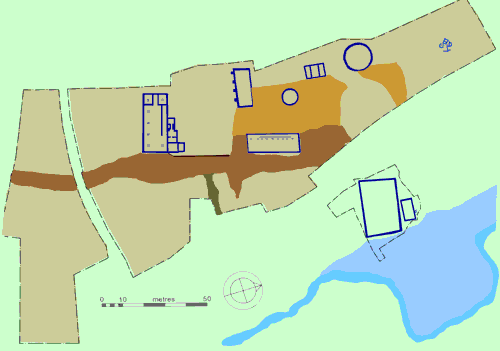During the late 1st Century a large farm was built further down the hill towards Bradwell Brook. The earlier hill top settlement had now been abandoned and the land was used for agriculture and as a cremation cemetary by the new farmstead.
During the second part of the 2nd Century, after 150 AD, a temple or mausoleum was constructed on the hilltop and the cremation cemetary went out of use.
The farmstead flourished for nearly a century. The end of the farmstead was around 170 AD when most of the buildings were destroyed by fire.

Explore the map and Click on the Farmhouse and Sauna to find out more!